more about thimbles





Magdalena and William Isbister.
Patriotic thimbles
The death of the Duke of Wellington (Fig 78) in 1852 was commemorated by the production of a silver thimble. The thimble (Fig 79) is made in the same way as the early Victorian pictorial thimbles and shows the Duke riding on his horse above the inscription ‘Wellington born May 1 1769 died Sept 14 1852’.
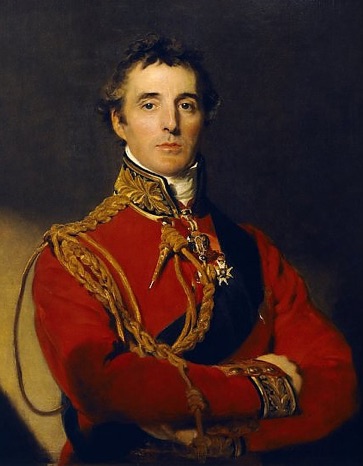
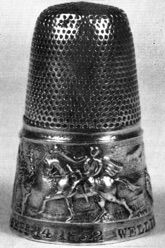
Fig 78 Fig 79
The Crimean War (Fig 80) which took place between October 1853 and February 1856 was a conflict between the Russian Empire under Tsar Nicholas I and an alliance of the French, British and Ottoman Empires, and the Kingdom of Sardinia. It took place on the Crimean Peninsula.
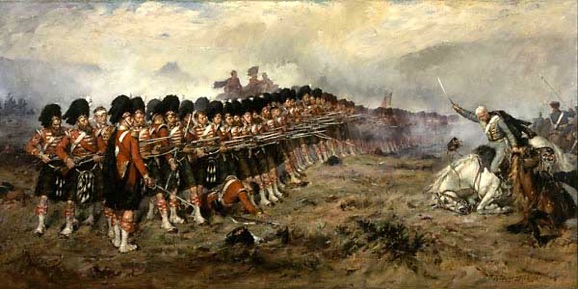
Fig 80. The thin Red Line
Two inexpensive brass thimbles (Fig 81) were made to commemorate the brave of the war. One has ‘Honour the Brave’ on the border and the other has ‘Heroes of the Crimea’ in a similar position.
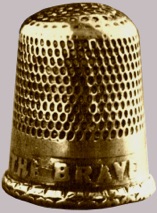
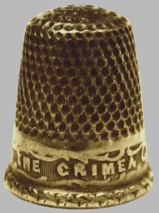
Fig 81
A thimble made in 1899 has a daisy top and border with an applied British soldier carrying a rifle (Fig 82). The rim is plain and flat and bears the size number (14), the makers mark (HG & S Ltd) and the hallmark. It was made to commemorate Boer War by Henry Griffiths and Sons Limited of Birmingham.
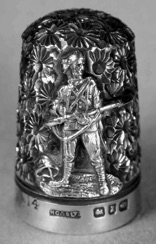
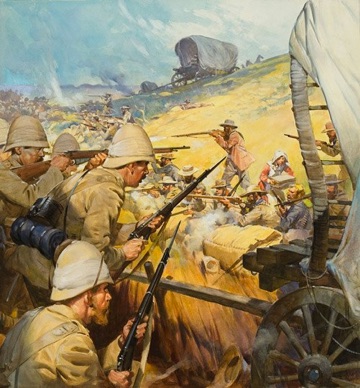
Fig 82
The design is from a painting by Richard Caton Woodville, “A gentleman in kaki” which was to illustrate Rudyard Kipling’s poem.
Advertising Thimbles
We have discovered an advertising thimble (Fig 83) which depicts the Royal Arsenal at Woolwich and advertises the firm of TP Birts, of Powis Street, Woolwich. Birts were watchmakers, jewellers and opticians and sold second hand guns and revolvers. The thimble is in the style of the later Victorian pictorial thimbles and in inscribed ‘Birt, Nr Royal Arsenal Woolwich’ (7). The company was still in operation as a pawnbroker in 1990.
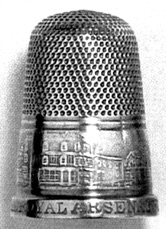
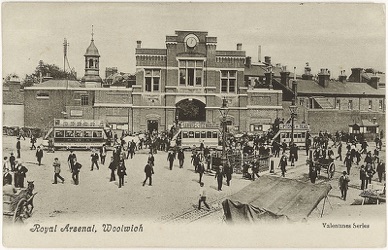
Fig 83
A second plain brass thimble (Fig 84) has ‘Garibaldi’ stamped into the ribbed border. It is thought that this thimble might be advertising the Garibaldi biscuit, really a currant sandwich, which was first manufactured by the Bermondsey biscuit company, Peek Freans, in 1861. Garibaldi did make a visit to Tynemouth in 1854 but it seems to be unlikely that such an inexpensive thimble would have been made to commemorate the visit.
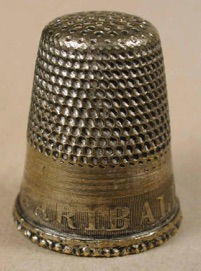
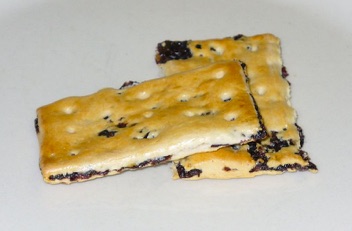
Fig 84
In 1896 Henry Griffith and Sons of Birmingham made a thimble to advertise the 'Peoples Friend' magazine (Fig 85). The magazine was founded in 1869 and was aimed primarily at older women and contained short stories, serials and various factual articles. It is currently published by D.C. Thompson and Co.
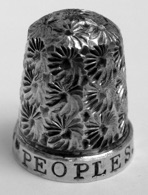
Fig 85
Other thimbles
The Victorians were prolific potters and in addition a wide selection of porcelain wares and the occasional souvenir thimble, they made decorative thimbles, some of which were actually used by the ladies of the day for sewing. Many of these early English porcelain thimbles were unmarked so that it is often difficult to be certain which manufactory actually made the thimble. The first Worcester porcelain factory (1751-1783) seems to have developed as a result of experiments made by Dr John Wall and apothecary William Davis who attempted to find the secret of fine porcelain in about 1750. Soon they were making the finest blue and white porcelain that money could buy. A decorator at the first factory, Robert Chamberlain left to form his own company (1783-1850) and in 1801 one of his apprentices, Thomas Grainger, left to found his own company (1801-1902). Richard Binns and William Kerr took over the management of Chamberlain and Co. in 1852 and some ten years later the Royal Worcester Porcelain Company (Fig 86) was founded. It became, arguably, the biggest producer of English porcelain thimbles but, Chamberlain’s (Fig 87), Grainger and Co. (Fig 88), Kerr and Binns (Fig 89), Coalport China (Fig 90), and Crown Derby (King Street), and Stevenson & Hancock (Osmaston Rd), both of Derby, (Fig 91), all probably made thimbles too.
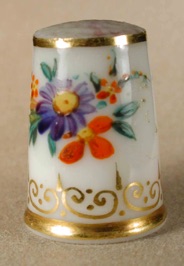
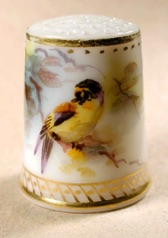
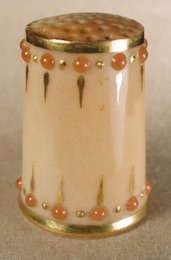
Fig 86
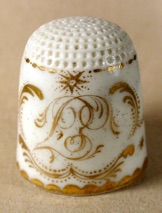
Fig 87
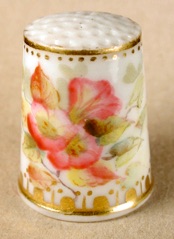

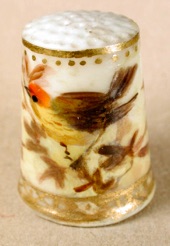
Fig 88
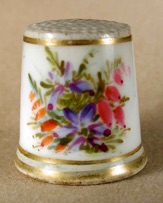
Fig 89
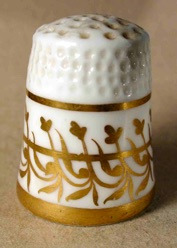
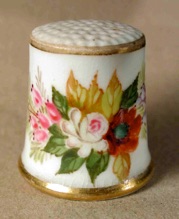
Fig 90
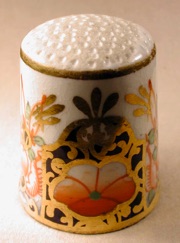
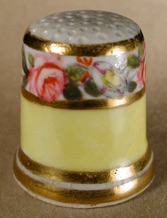
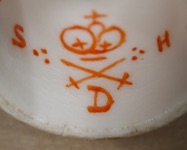
Fig 91
Conclusion
The Victorian era was the golden age of British thimble making although many of the pictorial thimbles themselves were made in small numbers. At no other time in the history of British thimble making were there so many beautiful and decorative thimbles made. Collectors now have to search very diligently to find these miniature works of art. In more recent times thimbles have been made in greater numbers but the beauty and craftsmanship of the old Victorian thimbles has not been bettered.
Clearly there are some Victorian thimbles which have not been included in this paper because no images are available. A ‘full’ list of Victorian thimbles was created by Friend (8) in 1987 and updated by Gowan (9) in 2012.
We would like to thank the TSL for permission to use the image in figure 52.
References
7. Holmes EF. Thimble Notes and Queries 1990; 8: 18.
8. Friend D. British Commemorative and Souvenir thimbles. Thimble Collectors International, 1987.
9. Gowan S. Queen Victoria Commemoratives at
http://thimbleselect.bizland.com/catalogue.htm
Holmes: ‘Commemorative Thimbles' pp. 173, 'Souvenir Thimbles' pp. 182.
Researched and published in 2002/11
Copyright@2011. All Rights Reserved
Magdalena and William Isbister, Moosbach, Germany
Victorian Pictorial (‘castle’), commemorative and souvenir thimbles 4
Navigation
